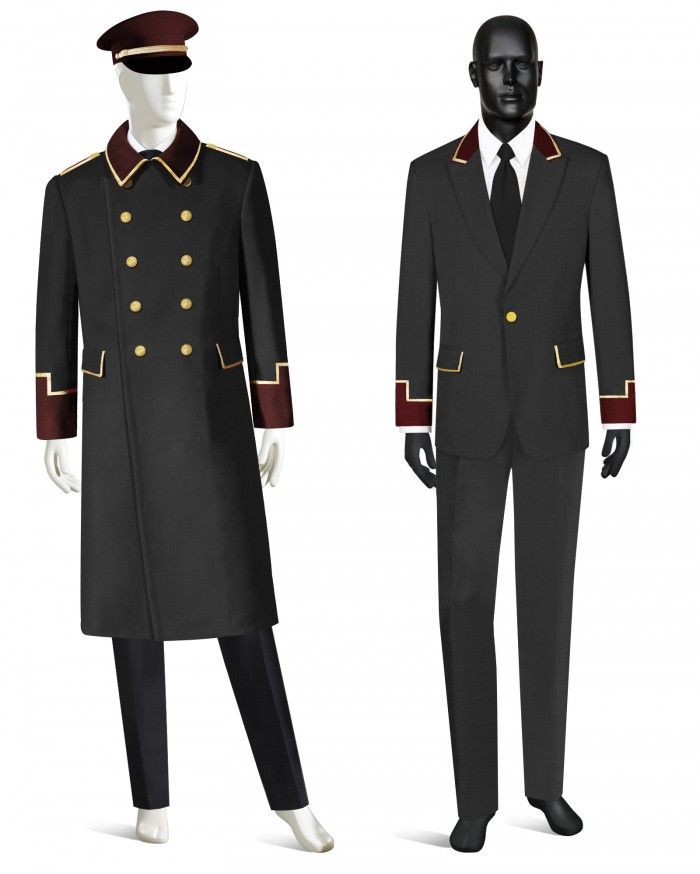
Cultural Identity Integration Architecture: Advanced Heritage Systems for Saudi Hospitality Attire 2025
In the transformative landscape of Saudi Arabia's hospitality sector, the integration of cultural identity with modern uniform design has evolved into a sophisticated architectural framework that transcends traditional approaches. As the Kingdom advances its Vision 2030 objectives, hospitality establishments are discovering that authentic cultural integration in staff attire creates profound connections with guests while preserving and celebrating Saudi heritage in contemporary contexts.
The Paradigm of Cultural Identity Integration Architecture
Cultural Identity Integration Architecture represents a revolutionary approach to hospitality uniform design that systematically weaves traditional Saudi elements into modern professional attire:
- Authentic Heritage Preservation: Maintaining the integrity of traditional Saudi design elements while adapting them for contemporary hospitality environments.
- Guest Experience Enhancement: Creating immersive cultural experiences that deepen guest appreciation for Saudi heritage and traditions.
- Brand Differentiation: Establishing unique hospitality identities that stand out in competitive markets through authentic cultural storytelling.
- Employee Cultural Pride: Fostering staff connection to their heritage while maintaining professional standards and service excellence.
- Economic Impact: Supporting local artisans and traditional crafts while driving tourism and cultural appreciation.
Heritage Integration Impact Study: KSA Hospitality Sector (2025)
- Hotels with authentic cultural uniform programs report 42% higher guest satisfaction scores for cultural experience.
- Staff wearing heritage-integrated uniforms show 35% increased pride in their workplace and cultural identity.
- Cultural uniform programs contribute to 28% longer average guest stays and increased repeat visitation.
Core Components of Advanced Heritage Systems
1. Heritage Pattern Library & Digital Preservation
The foundation of cultural integration lies in comprehensive documentation and preservation of traditional Saudi design elements:
- Traditional Motif Cataloging: Systematic documentation of regional patterns, geometric designs, and symbolic elements from across Saudi Arabia's diverse cultural landscape.
- Digital Pattern Banks: High-resolution digital archives that preserve traditional designs while enabling modern reproduction and adaptation.
- Regional Variation Mapping: Recognition and preservation of distinct cultural elements from different Saudi regions, from Najd to Hijaz to the Eastern Province.
- Historical Context Documentation: Understanding the cultural significance and appropriate usage of traditional elements in contemporary contexts.
2. Adaptive Design Engine Technology
- AI-Powered Pattern Adaptation: Machine learning systems that intelligently modify traditional patterns for different uniform applications while maintaining cultural authenticity.
- Scale Optimization Algorithms: Technology that ensures traditional motifs remain recognizable and meaningful across various garment sizes and applications.
- Color Harmony Systems: Advanced color matching that respects traditional palettes while accommodating modern hospitality branding requirements.
- Cultural Compliance Verification: Automated systems that ensure all adaptations respect cultural sensitivities and traditional usage protocols.
3. Modular Integration Framework
- Layered Design Systems: Hierarchical approaches that allow varying levels of cultural integration based on role, occasion, and guest interaction requirements.
- Interchangeable Elements: Modular components that can be combined in different configurations to create diverse looks while maintaining cultural coherence.
- Seasonal Adaptations: Systems that accommodate cultural celebrations, religious observances, and seasonal variations in traditional dress.
- Brand Customization Protocols: Frameworks that allow individual hospitality brands to integrate their identity while respecting cultural authenticity.
Implementation Methodology for Heritage Integration
Phase 1: Cultural Research & Documentation
Comprehensive cultural analysis forms the foundation of authentic integration:
- Ethnographic Studies: Collaboration with cultural historians, traditional artisans, and community elders to understand the deep significance of design elements.
- Regional Cultural Mapping: Detailed analysis of cultural variations across Saudi Arabia's diverse regions and communities.
- Traditional Craft Documentation: Recording traditional manufacturing techniques, materials, and processes for authentic reproduction.
- Contemporary Relevance Assessment: Understanding how traditional elements can be meaningfully integrated into modern hospitality contexts.
Phase 2: Design Integration & Adaptation
- Cultural Element Abstraction: Thoughtful simplification of complex traditional patterns for modern textile applications while preserving essential characteristics.
- Functional Integration: Seamlessly incorporating cultural elements into practical uniform components without compromising functionality.
- Hierarchy Development: Creating systems that appropriately reflect the significance of different cultural elements in various uniform applications.
- Quality Standards Establishment: Defining standards that ensure cultural authenticity while meeting modern hospitality requirements.
Phase 3: Technology Integration & Production
- Advanced Manufacturing Integration: Utilizing cutting-edge textile technologies to reproduce traditional elements with modern efficiency and consistency.
- Quality Assurance Systems: Implementing rigorous standards that maintain both cultural authenticity and modern production quality.
- Scalability Solutions: Developing systems that enable mass production while preserving the artisanal quality of traditional craftsmanship.
- Continuous Refinement Protocols: Establishing feedback mechanisms that allow for ongoing improvement and cultural sensitivity adjustments.
Advanced Technologies in Heritage System Implementation
Digital Pattern Recognition & Adaptation
- Machine Learning Pattern Analysis: AI systems that can identify, categorize, and adapt traditional patterns while maintaining their cultural integrity.
- Automated Scaling Algorithms: Technology that ensures traditional motifs remain proportionally correct and visually appealing across different applications.
- Color Psychology Integration: Systems that balance traditional color significance with modern hospitality psychology and branding requirements.
- Cultural Sensitivity Verification: Automated checking systems that ensure all adaptations respect cultural protocols and traditional usage guidelines.
Smart Textile Integration
- Performance Enhancement: Incorporating modern textile technologies that improve comfort and functionality while maintaining traditional aesthetic appeal.
- Climate Adaptation: Advanced materials that provide comfort in Saudi Arabia's challenging climate while preserving traditional design elements.
- Durability Optimization: Modern treatments that ensure traditional elements maintain their appearance through frequent use and cleaning.
- Sustainability Integration: Eco-friendly materials and processes that align with both traditional values and modern environmental consciousness.
Cultural Elements in Modern Hospitality Applications
Traditional Motifs & Geometric Patterns
Authentic Saudi design elements adapted for contemporary hospitality use:
- Najdi Geometric Patterns: Traditional angular designs from central Saudi Arabia adapted for modern uniform trim and accent applications.
- Hijazi Architectural Elements: Design motifs inspired by traditional Hijazi architecture integrated into uniform details and accessories.
- Bedouin Textile Traditions: Traditional weaving patterns and color combinations respectfully adapted for modern hospitality contexts.
- Islamic Geometric Art: Classical Islamic geometric principles applied to create sophisticated, culturally resonant uniform elements.
Color Psychology & Cultural Significance
- Traditional Color Palettes: Authentic Saudi color combinations that carry cultural meaning while supporting modern hospitality branding.
- Seasonal Color Variations: Adaptations that reflect traditional seasonal celebrations and cultural observances.
- Regional Color Preferences: Recognition of color significance variations across different Saudi regions and communities.
- Modern Color Integration: Thoughtful blending of traditional colors with contemporary hospitality color psychology.
Benefits & Impact of Heritage Integration Systems
Guest Experience Enhancement
- Cultural Immersion: Authentic uniform elements create deeper cultural experiences that enhance guest appreciation for Saudi heritage.
- Educational Value: Uniforms become conversation starters that allow staff to share cultural knowledge and stories with interested guests.
- Memorable Experiences: Distinctive cultural elements create lasting impressions that encourage repeat visitation and positive word-of-mouth.
- Authentic Storytelling: Uniforms support broader cultural narratives that enhance the overall hospitality experience.
Staff Engagement & Cultural Pride
- Heritage Connection: Staff wearing culturally authentic uniforms report stronger connections to their cultural identity and workplace.
- Professional Pride: High-quality, culturally significant uniforms enhance staff pride in their appearance and role.
- Cultural Ambassador Role: Staff become active participants in cultural preservation and sharing through their attire.
- Workplace Satisfaction: Cultural integration in uniforms contributes to higher job satisfaction and employee retention.
Economic & Social Impact
- Local Artisan Support: Heritage integration programs often support traditional craftspeople and local textile industries.
- Cultural Tourism Enhancement: Authentic cultural elements in hospitality contribute to Saudi Arabia's cultural tourism objectives.
- Heritage Preservation: Commercial application of traditional elements helps preserve and promote cultural knowledge for future generations.
- International Recognition: Authentic cultural integration enhances Saudi Arabia's international reputation for cultural sophistication and preservation.
Future Innovations in Cultural Integration Architecture
Emerging Technologies
- Augmented Reality Integration: AR systems that allow guests to learn about cultural elements in uniforms through mobile applications.
- Blockchain Authentication: Technology that verifies the authenticity and cultural appropriateness of traditional elements used in modern applications.
- AI Cultural Advisors: Advanced systems that provide real-time guidance on cultural sensitivity and appropriate usage of traditional elements.
- Virtual Reality Design Studios: Immersive environments where cultural experts and designers collaborate on authentic integration projects.
Sustainability & Innovation
- Eco-Friendly Traditional Materials: Modern processing of traditional materials using sustainable methods and technologies.
- Circular Design Principles: Creating heritage-integrated uniforms designed for longevity, repair, and eventual recycling.
- Local Supply Chain Development: Building sustainable local production capabilities that support both cultural authenticity and economic development.
- Innovation in Traditional Techniques: Modernizing traditional crafting methods to improve efficiency while preserving authenticity.
Implementation Challenges & Solutions
Common Implementation Challenges
- Cultural Sensitivity Navigation: Ensuring appropriate and respectful use of traditional elements in commercial contexts.
- Authenticity vs. Practicality: Balancing cultural authenticity with modern hospitality functionality requirements.
- Cost Management: Managing the higher costs associated with authentic cultural integration and traditional craftsmanship.
- Staff Training Requirements: Educating staff about the cultural significance of their uniforms and appropriate representation.
Strategic Solutions
- Cultural Advisory Boards: Establishing ongoing relationships with cultural experts and community leaders for guidance and validation.
- Phased Implementation: Gradual introduction of cultural elements to allow for refinement and staff adaptation.
- Investment in Quality: Focusing on long-term value rather than short-term cost savings to ensure authentic and durable results.
- Comprehensive Training Programs: Developing educational programs that help staff understand and appreciate their role as cultural ambassadors.
Conclusion: The Future of Cultural Hospitality
Cultural Identity Integration Architecture represents the future of hospitality uniform design in Saudi Arabia, where authentic heritage preservation meets modern service excellence. By systematically integrating traditional elements with contemporary functionality, hospitality establishments can create unique experiences that honor the past while embracing the future.
As Saudi Arabia continues to welcome the world while preserving its cultural identity, heritage integration systems in hospitality uniforms serve as powerful tools for cultural diplomacy, economic development, and authentic storytelling. The success of these systems lies not just in their aesthetic appeal, but in their ability to create meaningful connections between guests, staff, and the rich cultural heritage of the Kingdom.
About the Author

Dr. Khalid Al-Otaibi
Dr. Khalid Al-Otaibi is a leading Cultural Heritage Integration Specialist with expertise in traditional Saudi arts, modern design technology, and hospitality industry applications. With over 16 years of experience, he has pioneered innovative approaches to preserving and promoting Saudi cultural heritage through contemporary commercial applications, working with major hospitality brands across the Kingdom.
Transform Your Hospitality Brand with Authentic Cultural Integration
Discover how advanced heritage systems can elevate your hospitality brand through authentic Saudi cultural integration. UniformSA offers comprehensive cultural identity integration services for the modern hospitality sector.
Request Heritage Integration Consultation